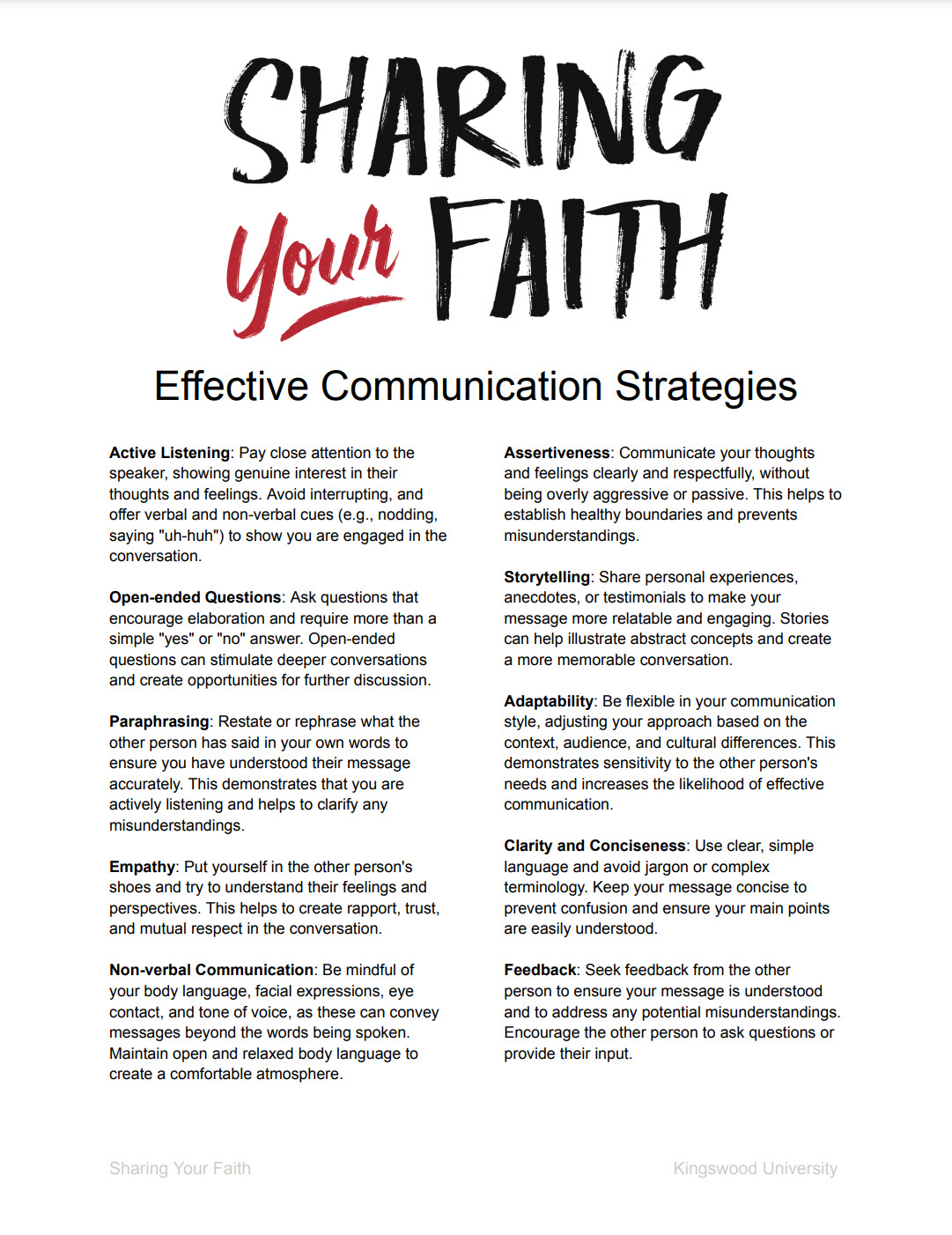
Effective communication strategies are essential for successful interactions in a variety of settings. Below are some common communication strategies for your consideration:
Active Listening: Pay close attention to the speaker, showing genuine interest in their thoughts and feelings. Avoid interrupting, and offer verbal and non-verbal cues (e.g., nodding, saying "uh-huh") to show you are engaged in the conversation.
Open-ended Questions: Ask questions that encourage elaboration and require more than a simple "yes" or "no" answer. Open-ended questions can stimulate deeper conversations and create opportunities for further discussion.
Paraphrasing: Restate or rephrase what the other person has said in your own words to ensure you have understood their message accurately. This demonstrates that you are actively listening and helps to clarify any misunderstandings.
Non-verbal Communication: Be mindful of your body language, facial expressions, eye contact, and tone of voice, as these can convey messages beyond the words being spoken. Maintain open and relaxed body language to create a comfortable atmosphere.
Storytelling: Share personal experiences, anecdotes, or testimonials to make your message more relatable and engaging. Stories can help illustrate abstract concepts and create a more memorable conversation.
Adaptability: Be flexible in your communication style, adjusting your approach based on the context, audience, and cultural differences. This demonstrates sensitivity to the other person's needs and increases the likelihood of effective communication.
Clarity and Conciseness: Use clear, simple language and avoid jargon or complex terminology. Keep your message concise to prevent confusion and ensure your main points are easily understood.
Feedback: Seek feedback from the other person to ensure your message is understood and to address any potential misunderstandings. Encourage the other person to ask questions or provide their input.
Empathy: Put yourself in the other person's shoes and try to understand their feelings and perspectives. This helps to create rapport, trust, and mutual respect in the conversation.
Assertiveness: Communicate your thoughts and feelings clearly and respectfully, without being overly aggressive or passive. This helps to establish healthy boundaries and prevents misunderstandings.
By incorporating these communication strategies into your interactions, you can improve your ability to connect with others, convey your message effectively, and foster meaningful conversations.
Reflection
Consider your own communication habits. In which areas are you the strongest? What are (1) one or (2) habits that you could incorporate more (or improve on)? Leveraging these strategies in relationships you are already engaged in is a good way to improve your current communication and gain experience when having conversations with others early in a new relationship.
